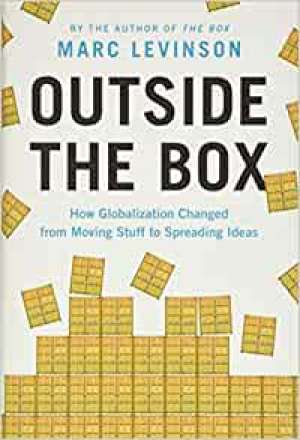08 March 2021
Outside The Box
Mark Levinson
2020, Princeton University Press, 280 pages,
ISBN 9780691191768
Reviewer: Ian Harwood

The future direction of globalisation – a macroeconomic phenomenon defined as the progressively enhanced inter-dependency of national economies and the product of increased flows of trade, capital and people – has been a subject of greatly heightened and frequently scare-mongering debate ever since the global financial crisis which resulted in the most severe contraction of global activity and trade since the Great Depression of the early 1930s
Indeed, back in 2008/09 there was much angst that, as in the 1930s, protectionism and increased restriction of international capital movements might be a favoured policy response. In the event, of course, such fears weren’t realised, as governments turned their collective backs on such antediluvian nostra and, instead, reasserted the desirability of open markets whilst implementing extraordinarily large measures of fiscal and monetary stimulus.
Subsequently, further challenges have arisen – notably the “America first” trade policy of the Trump administration and, most recently, the current pandemic and the challenge this poses to national security and the complexity of supply chains. At present, though, the signs are that the global economy remains exceptionally integrated. Importantly, this was the verdict of the most recent annual update of the Global Connectedness Index compiled by the logistics firm DHL and the NYU Stern Business School and released three months ago. Furthermore, worldwide merchandise trade has rebounded so strongly since its pandemic “hit” as now to stand above its pre-pandemic level. Even so, it seems most unlikely that the debate regarding whether we’ve already seen “peak” globalisation – particularly in the light of America’s bi-partisan squaring up to China’s geo-political muscle-flexing – is going to subside in the foreseeable future.
Against such an uncertain backdrop, the publication of Marc Levinson’s “Outside the Box”, and its helpfully explanatory sub-title “How Globalisation Changed from Moving Stuff to Spreading Ideas”, is excellently timed. The author has long experience of addressing such a broad topic. The book’s index, for instance, contains a citation of an article he wrote for “Newsweek” magazine back in 1992. Levinson subsequently worked in editorial positions at The Economist magazine. And In 2006 he made his mark in the globalisation publishing stakes with the fascinating and insightful “The Box: How the Shipping Container Made the World Smaller and the World Economy Bigger”. He is currently ensconced at the US Council on Foreign Relations.
As befits a journalist, Levinson has written a highly readable, informative and (thankfully) jargon-free account of how the increasingly pervasive phenomenon of “globalisation” has developed. Thus, he makes the familiar distinction between the First Globalisation, eclipsed so precipitately by the outbreak of World War One with efforts to restore the status quo ex ante during the 1920s being fatally dashed by the onset of the Great Depression. He then proceeds to tell the post-1945 story, distinguishing between the Second and Third waves of globalisation, the former centred upon the reduction of trade barriers and the latter upon the massive extension of international supply chains. He concludes by arguing that the Fourth Globalisation, defined as the quickening cross-border flow of services and ideas, is already well underway and, more controversially perhaps, has much further to run.
Many facts and figures are included in his temporal narrative and a distinctive feature of his approach – doubtless developed and honed during his lengthy media career – is to cite illustrative examples of processes of increasing economic integration which effectively constitute a myriad sequence of case-studies. This is an unusual approach for a book which covers so much ground but it is, nonetheless, one which works most interestingly and effectively.
It should also be said that Levinson is admirably dispassionate in his treatment of the arguments about the pros and cons of globalisation and studiously avoids the partisanship which has coloured (and often blighted) the writings of so many others on this subject.
Much has been written about globalisation in recent decades – so much so, in fact, that it’s hardly an exaggeration to say that the shelves of large bookshops groan under the weight of many learned and informative tomes. Even so, I would judge Levinson’s book to be a valuable and stimulating contribution to the literature which can be profitably (and enjoyably) read by economist and non-economist alike.
